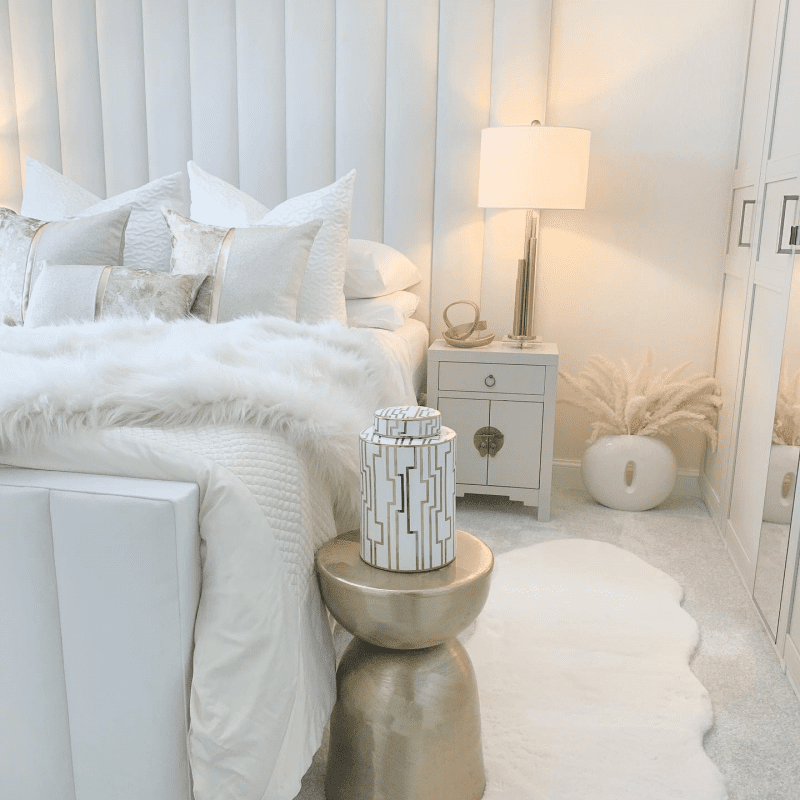When choosing the right Frank’s carpet for you, there are two main characteristics to consider: fabric type and pile type.
These characteristics determine the structure of the carpet and how it will feel underfoot, so it’s important to know how they make a difference.
The pile of a carpet is how the loops of fibre are attached to the carpet backing. Carpets are made by looping fibre yarns through the backing material, similar to how buttons of a shirt are sewn on. These loops can either be left intact or cut at various lengths and angles.
When it comes to fibre types, there are many used in carpet. The most common are nylon, polyester, acrylic, wool, and polypropylene. Therefore, there is a lot to consider when choosing the perfect carpet for your home.
Here are the most common types of fabrics and pile types to consider.
Polypropylene
Polypropylene is used in many commercial and residential applications and is almost as soft-feeling as nylon. Polypropylene fibres are similar to natural wool and are often used as a synthetic substitute to wool.
This type of fibre is highly stain resistant and is relatively easy to clean. In some cases, bleach can even be used to eradicate dirt and marks. The cost of polypropylene is also slightly less than most nylon carpets, which makes it a cost effective option.
Nylon
Nylon is the most durable of synthetic fibres and as a result can last 12 to 15 years when cared for properly. It is by far the most popular fibre type and shows good resistance to wear, mildew, mould, and rot and holds its colour considerably well.
It is also extremely soft, durable and resistant to abrasions and stains. In terms of pricing, it is usually more expensive than other synthetic fibres but less expensive than wool.
Polyester
Polyester is praised for its ability to hold a variation of vibrant colours that are fade resistant. Due to this type of fabric being man made, it is also far more hypoallergenic when compared to other carpets.
The only drawback with polyester carpets is that they are prone to flattening under weight, which can make them a bad choice for high traffic areas such as living rooms and hallways.
Wool
Wool is a natural and luxurious choice for carpet that is long-lasting and by far the softest material you will find on the market. It is an excellent choice for anyone who suffers from allergies or is sensitive to chemicals because it is made with no additives.
However, because wool is a natural material it can be prone to damage from mould and mildew and so is not good for areas where high humidity and moisture are an issue.
Often, wool/acrylic carpet blends are popular to combine the stain resistance of acrylic with the plush and expensive feel of wool but for a lower price.
Acrylic
Acrylic is often referred to as “synthetic wool” because it replicates the appearance of wool but for a fraction of the price. It displays excellent resistance to moisture, mildew, fading, staining, and static electricity.
The only issue with acrylic carpet is that it doesn’t display the same durability levels that nylon does. Therefore, using it in high traffic areas isn’t always recommended.
Cut pile
This style of carpet pile shows exposed fibres that have been sheared off. This pile type typically produces carpet that is soft, easy to clean, and inviting in any home.
Cut pile carpet is available in many different lengths and thicknesses, which makes it work well in an entirely carpeted house because it has the ability to transition seamlessly from room to room.
The individual fibres contain a twist in carpets with this pile type to help it stand up and resist against crushing matting. Basically, the heavier the twist, the higher resistance it will have and the more texture it will feature to combat against dirt and marks.
Loop pile
Loop pile carpets leave the entire yarn loop intact on the surface of the piece. This type of carpet is typically easy to clean, highly durable, and resistant to stains; which makes it the perfect choice for high traffic commercial or residential applications.
A loop pile carpet also won’t show indentations caused by vacuums or footfall. At Frank’s, we have a huge range of affordable loop pile carpet, available in level loop, patterned loop, or cut-and-loop options.
Saxony cut
Saxony pile carpets are usually very soft and dense. The short fibres stand straight up and down to create a luxurious-feeling, fuzzy surface.
A slight problem is that the strands can become easily crushed by feet and vacuum cleaners. It is also susceptible to staining, therefore Saxony pile carpets are best suited to low traffic areas.
Plush pile
Plush pile is a variation of cut pile in which the fibres are even shorter than a Saxony cut. They are usually very densely-packed and boast a luxurious surface.
Although, this style of carpet is prone to impressions such as scuffing, showing footprints, and wearing down; it is best for low traffic areas that are typically less visited.
Textured cut
Textured cut-pile carpets display fibres of uneven lengths. A special steam treatment is used to twist the fibres into spiral strands so that they remain kinked to combat footprints and other marks that can appear on the surface of a carpet.
This pile type is suited to mid-to-high level traffic areas.
Pop on down to your local Frank’s and we’ll help you pick out the perfect carpet for your home!







